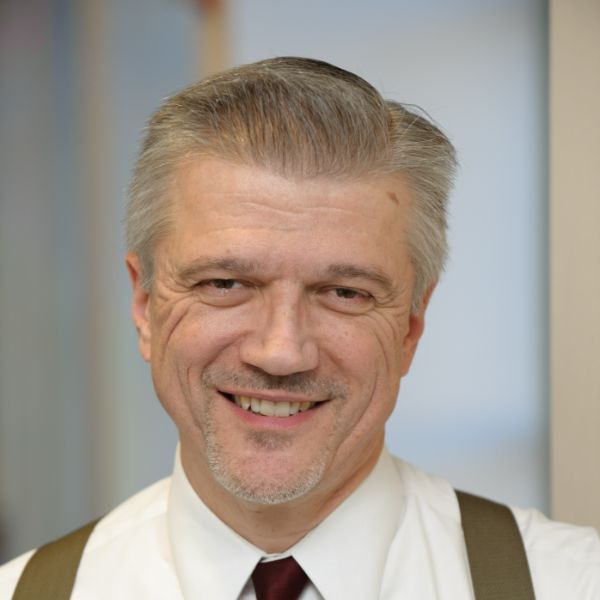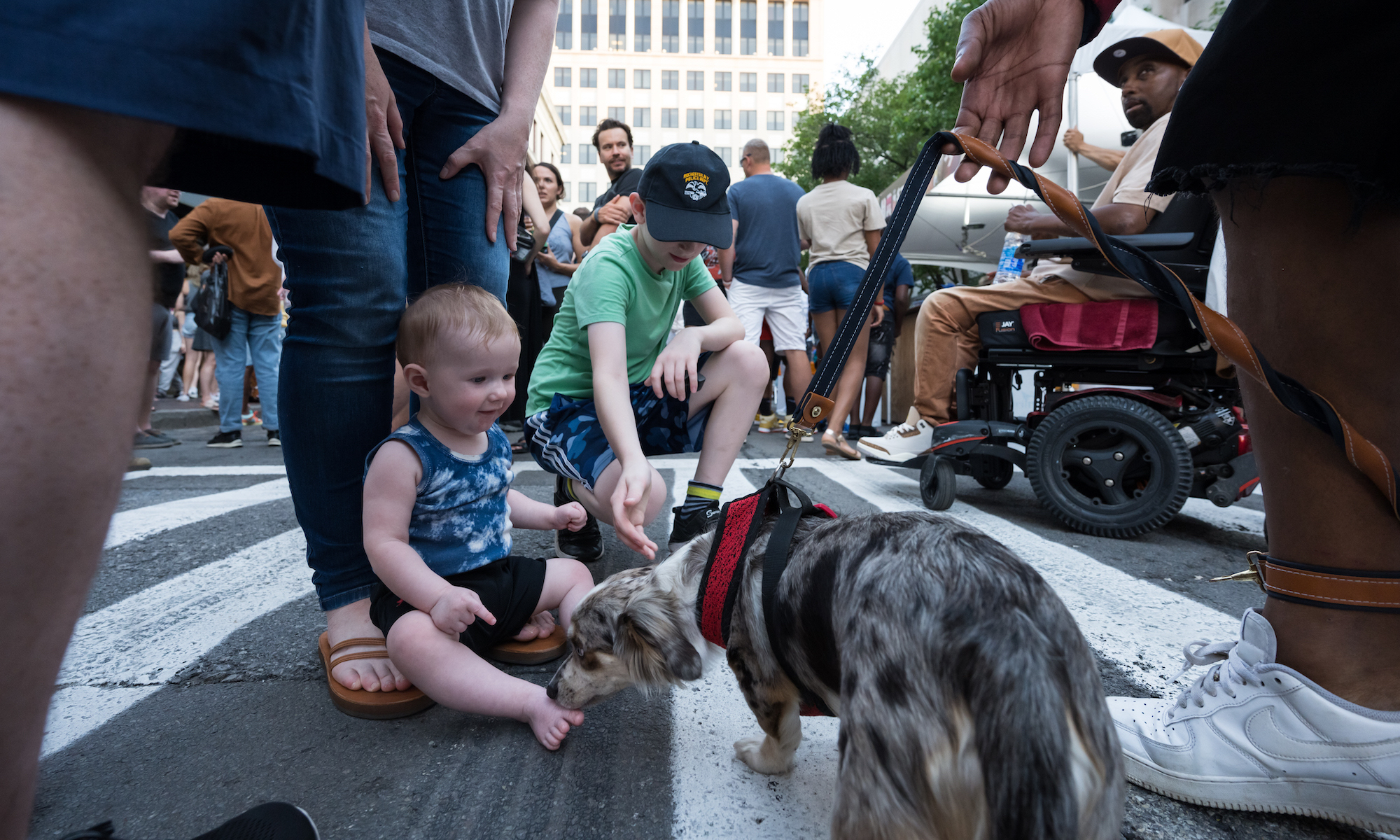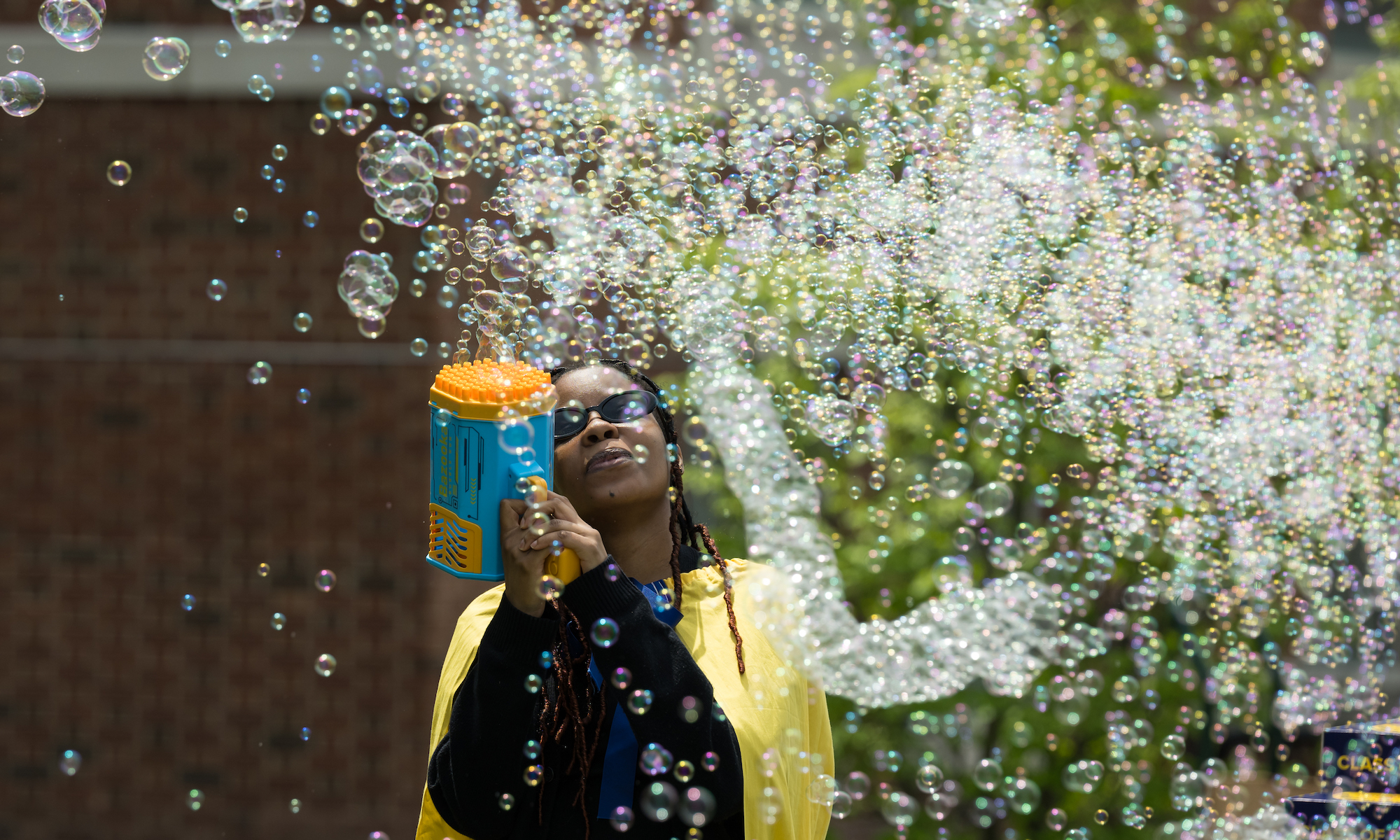The University of Rochester students in Katrina Smith Korfmacher’s Environmental Health and Justice in the Rochester Community class recently explored something hidden from most people in Rochester—the abandoned aqueduct and subway tunnel located under the Broad Street Bridge in the heart of downtown.
Since the site closed in 1956, the question of what to do with it has persisted, even as over the years it has become an underground location for concerts, art shows, murals, and graffiti art. Now, the City of Rochester’s “Aqueduct Reimagined” project is the centerpiece of ROC the Riverway, a plan to revitalize the Genesee River waterfront and transform downtown into a place for public gatherings and community events.
As Korfmacher explains, the tour, led by ROC the Riverway Program Manager Kamal Crues (pictured, pointing), gave the 11 undergraduates in PHLT 238 a chance to consider multiple—and occasionally conflicting—interests and values central to the project. “That includes balancing some people’s appreciation for graffiti art with other people’s interest in historic preservation,” says Korfmacher, who is a professor of environmental medicine and of public health sciences.
As part of their coursework, the students will write a policy memo on how the “Aqueduct Reimagined” project can best promote health equity in the City of Rochester. They will then take part in the city’s public engagement session on April 27.
The community visits give students the opportunity to interact with local stakeholders involved in issues like local fish consumption, urban forestry, and community gardens. Korfmacher says those interactions inform their final projects on what it would take for Rochester to become an equitable climate haven.
- Learn more about Rochester’s Undergraduate Program in Public Health.




